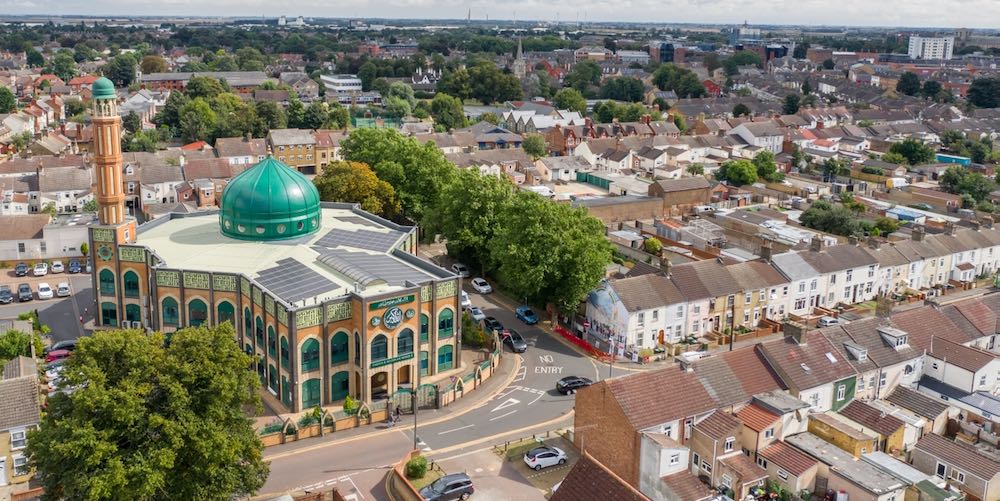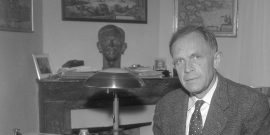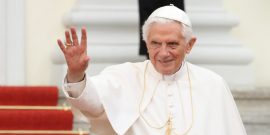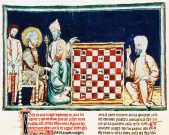Röpke looked for a liberalism purged of rationalist tendencies and infused with normative content reflecting Western civilization's accomplishments.
Getting Perspective on British Islam
We live in a society that appears to be dominated by fear of one kind or other. Yet, we still remain who we are. Our culture, ethnicity, religion, and any other elements that make up an identity have not been erased because of the emerging “Brave New World.”
We remain different from one another, and the clash of cultures and civilizations still exists, albeit on a different level than it once did. British writer and political advisor, Ed Husain, explores both the clash and dialogue among cultures in his book, Among the Mosques: A Journey Across Muslim Britain. The news cycle may be overtaken everything from by Covid-19 to election politics, but people are still living their lives within their own particular existential and cultural frameworks.
Husain travels across Great Britain, and visits a variety of Muslim communities, seeking an understanding of how these communities function, and how each particular Muslim culture is relating to the English, Western mindset. Being a British Muslim himself, Husain affirms that being a Muslim in Britain is not a simple thing. There are many nuances in the life of Muslim communities, such that Muslims differ widely even from each other. This clash of cultures has created many occasions for conflict, some of which have resulted in horrific terrorist attacks. It’s hardly a secret that some Muslim factions are extreme, aggressive, and ideologically motivated to destroy the West, while also keeping their own people in shackles, especially women and young girls.
Husain is a great example of a writer seeing the truth for what it is. Most of what is written these days on Islam and its relation to the West tends to be one-sided and colored by either leftist or conservative ideology. One is forced to be either pro-Muslim or anti-Muslim, and in this “us versus them” mentality, much nuance is lost. In addition, the notion of an individual Muslim disappears when such an approach is taken.
This is not the case with Husain. As he moves from one city to the next, his open-mindedness allows him to have deep conversations with a variety of Muslims, both the clerics and the believers. Although Husain approaches his inquiry mostly from a sociological point of view, this journey is also deeply personal for him. He is a faithful man but sees a great danger in theocratic and fundamentalist Islam. His views on the world are very much British and cosmopolitan, yet he is troubled by the question of whether unity and dialogue between Muslims and the British are possible. After all, if everyone accepts the British principles of freedom, liberty, and individual responsibility, then why would faith present an obstacle to the flourishing of culture? For this reason, Husain has no problem criticizing the extreme Muslim mindset that is based on ideology and caliphate, yet he maintains a distance as he engages in, often, uneasy conversations. Many times, Husain is rejected and seen as an interloper, and as a result, he is not privy to the details of some Muslim communities. But this too becomes part of his journey into the Muslim faith.
Most of the Muslim communities in Britain are separated from the rest of British society. This is by their own choosing, especially when it comes to their rejection of basic women’s rights. For example, Husain reflects on a woman, Faiza, with whom he has been trying to meet, in order to have a dialogue about Muslims in Manchester. He hasn’t had much luck, and he knows why: “As a Muslim woman in Manchester, her local community observed her movements and meetings. Contact with men was limited to family, marriage or religious settings.” Husain’s meeting with Faiza barely occurs, and he is forced to meet her in the presence of her husband, Taj-Paul, who is actually a convert to Islam.
Muslim communities are self-isolated and generally reject both liberal and conservative Western views. Yet many have embraced the principles of activism mostly found in leftist politics and ideology.
It is not unusual for any convert to any religion to become more extreme and spiritually ascetic in his or her practices than those who have been born into that particular religion. Psychology plays a significant part in all of this, especially when we witness how men and women born and raised in Western society accept and fully embrace an extreme version of Islam: from sharia to doctrines to attire itself! For example, in one conversation, Husain finds out about a prominent shaikh in London who refused to sign a letter against ISIS because the letter condemned slavery. The shock comes from the fact that this very same shaikh is a “white English convert.” This is one of the most confounding elements Husain encounters in his travels.
Several questions arise: are these converts only interested in the aesthetics of fundamentalist Islam? Husain makes a point that “the commercialisation of Islamic literalism is here [London] in full view.” Are these white English men suffering from what Roger Scruton called oikophobia—hatred of one’s nation and nationality? If so, why? In many instances, the converts to Islam embrace the most extreme form of the faith because they are disgusted with the rampant leftism of the West. But what kind of life is to be expected from a rejection of one extreme and a corresponding embrace of another? After all, a true Muslim is not concerned too much with appearances but with what is in his or her heart, and how that belief in God is actualized in relationships with others and community.
How can an extreme faction of Islam even exist in Britain? “Clash” doesn’t even begin to cover the issue. Will this relationship remain stable if two cultures simply leave each other alone? On his travels in Manchester, Husain visits a “small church, now converted into a mosque…A minaret has been constructed alongside it [the church] in the same red brick, with pointed arches that match the neo-Gothic windows of the original church building…The plainness of the mosque, using the space of a church without any of the furnishings, feels incongruous.”
Although Husain does not delve into the metaphysics of space, it is interesting that he observes this clash. There is a sense of uneasiness, but it is not because of his religion—Husain is obviously a Muslim. The uneasiness is there because of the original embodiment of the spiritual space, and an attempt to change its original ontology—the fact that this very building was a church. This is not to blame the Muslim community, which has reappropriated, or, to use the architectural term, repurposed the space. However, such a change does raise existential and cultural questions. Why is the church abandoned in the first place? Most likely because of the low attendance and the abandonment of the Christian faith. Should the church have been torn down? Is the offense bigger at the appropriation of the space? These are the questions that Husain doesn’t ask, and he should not be faulted for that. However, our immediate experience of the space as well as the otherness of the people is usually visceral and raises many issues.
Husain also encounters a fair share of activism present in mosques, most of it benign, focused on familiar liberal causes. There are bureaucracies, just like in any religion, as well as outreach into the community in helping the poor and the marginalized, which includes both Muslims and non-Muslims. There is a strange form of dialogue that is actually occurring, which usually has nothing to do with pontifications on elaborate theology, but rather with simple encounters among Muslims and non-Muslims. In other words, the Muslim communities in various cities that Husain visits are intermingling with their non-Muslim neighbors. They are not completely isolated, and the dialogue that is taking a place is implicit and unspoken.
The activism is usually intertwined with global issues, such as climate change or various political conflicts outside of Britain, which in and of itself is a rather bizarre reality that we have been witnessing in a variety of communities in Western nations. People, especially those who align themselves with liberal ideology, tend to focus on and support causes that are occurring thousands of miles away rather than focusing on the local problems. And so, Husain opens up the issue of “local versus global,” and the strange mix of theories and dispositions of many Muslim communities in Britain.
On the one hand, Muslim communities are self-isolated and generally reject both liberal and conservative Western views. Yet, strategically and methodologically, many have embraced the principles of activism mostly found in leftist politics and ideology. Does this mean that their view is incongruent with the Western worldview? How do we reconcile their rejection of British liberalism and conservatism with their acceptance of liberal methods? Are these communities even aware of such connections or is there something inherently “leftist” and “ideological” about global activism?
For Husain, accepting British citizenship is a non-negotiable fact, and people in Britain ought not to engage in oikophobia. Losing that cultural “inheritance” is not an option
In the midst of a lot of disagreement that Husain has with community leaders, there are instances of beautiful encounters with Muslims who are devoted believers, yet who appreciate Britain greatly. “I feel that too many Muslims,” writes Husain, “have taken an anti-state, anti-West approach as a way of defining themselves.” A London mufti that he speaks with fully agrees: “Our sharia is the British constitution,” says the mufti.
Both men are against theocracy and caliphate-driven society. The mufti confirms further positions that Husein shares: “…too many Muslims don’t understand that turning against this country [Britain] is to turn against our own selves.” Just like Husain, the mufti is not afraid to speak about the historical facts that involve Islamic conquests. This, however, does not make him anti-Islam. In fact, his faith is affirmed not because he agrees with various atrocities that were committed by, for example, the Ottoman empire, but because he wants to view his faith and its history fully and authentically.
It’s not easy to once and for all conclude what Muslim identity consists of. Similarly, Husain asks “What is Britishness? To what should newcomers and their children adhere in order to belong and feel at home? The weather? Queuing, apologizing a lot, roses and gardens, Marmite, eccentrics, digestive biscuits, fish and chips, tea, Wensleydale cheese and sponge cakes are all endearing, but not enough. And have I just confused Britishness with Englishness?”
In many ways, Husain reveals that British culture has been suffering from its own lack of identity for years. The rise of extreme leftism and rejection of tradition has made matters more difficult and destructive for every culture within Britain. There will be inevitable vacuums and rejections of what is good and normal, of what constitutes law and liberty. As Husain writes, “We have become separate tribes with different and opposing identities. Because we cannot talk openly about Christian or atheist worries about Islam, or Islam’s current fears of liberalism, we are all creating a huge void.”
This attitude erases any possibility of dialogue. Differences among people will always exist, as will hatreds. However, Husain’s book is one example of intellectual and spiritual open-mindedness, which adds to the necessary dialogue. However, he does understand that one thing must be accepted in order to have a fruitful dialogue, and that is Britain’s national character. Accepting British citizenship is a non-negotiable fact, and people in Britain ought not to engage in oikophobia. Losing that cultural “inheritance” is not an option, and both Muslims and non-Muslims have responsibilities in this regard. As Husain writes, “For as long as we fly the flag with confidence in our national character, our Muslim and other fellow citizens will join the British mainstream with pride and a sense of belonging.”
Ultimately, as Husain’s book shows, real dialogue can only happen when people are in a direct encounter with one another, facing each other and their own authenticity or inauthenticity. The visceral encounter is the main element of any cultural dialogue, and only through that will either clash or a meeting of the minds and hearts be fully revealed.



